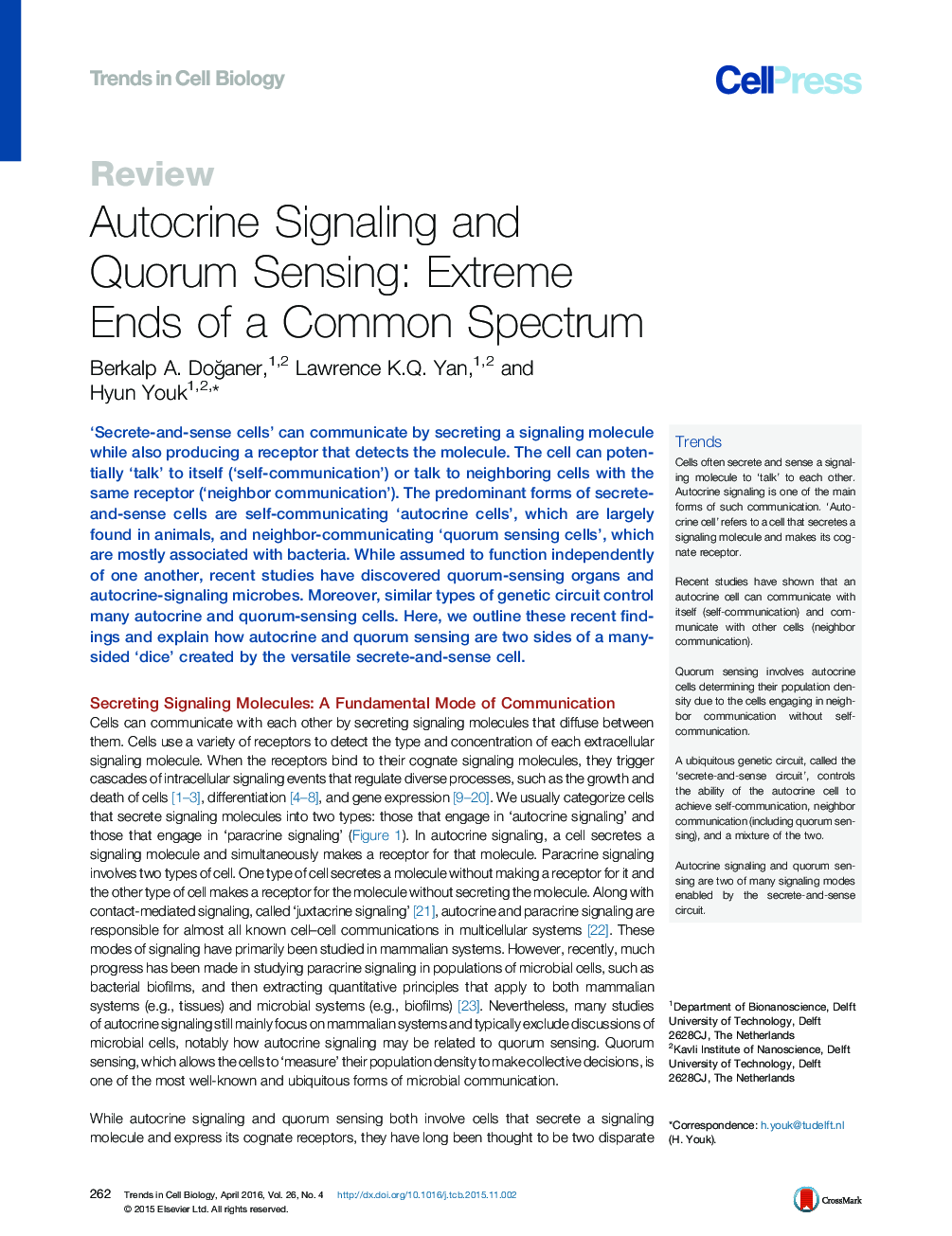| Article ID | Journal | Published Year | Pages | File Type |
|---|---|---|---|---|
| 2204268 | Trends in Cell Biology | 2016 | 10 Pages |
‘Secrete-and-sense cells’ can communicate by secreting a signaling molecule while also producing a receptor that detects the molecule. The cell can potentially ‘talk’ to itself (‘self-communication’) or talk to neighboring cells with the same receptor (‘neighbor communication’). The predominant forms of secrete-and-sense cells are self-communicating ‘autocrine cells’, which are largely found in animals, and neighbor-communicating ‘quorum sensing cells’, which are mostly associated with bacteria. While assumed to function independently of one another, recent studies have discovered quorum-sensing organs and autocrine-signaling microbes. Moreover, similar types of genetic circuit control many autocrine and quorum-sensing cells. Here, we outline these recent findings and explain how autocrine and quorum sensing are two sides of a many-sided ‘dice’ created by the versatile secrete-and-sense cell.
TrendsCells often secrete and sense a signaling molecule to ‘talk’ to each other. Autocrine signaling is one of the main forms of such communication. ‘Autocrine cell’ refers to a cell that secretes a signaling molecule and makes its cognate receptor.Recent studies have shown that an autocrine cell can communicate with itself (self-communication) and communicate with other cells (neighbor communication).Quorum sensing involves autocrine cells determining their population density due to the cells engaging in neighbor communication without self-communication.A ubiquitous genetic circuit, called the ‘secrete-and-sense circuit’, controls the ability of the autocrine cell to achieve self-communication, neighbor communication (including quorum sensing), and a mixture of the two.Autocrine signaling and quorum sensing are two of many signaling modes enabled by the secrete-and-sense circuit.
